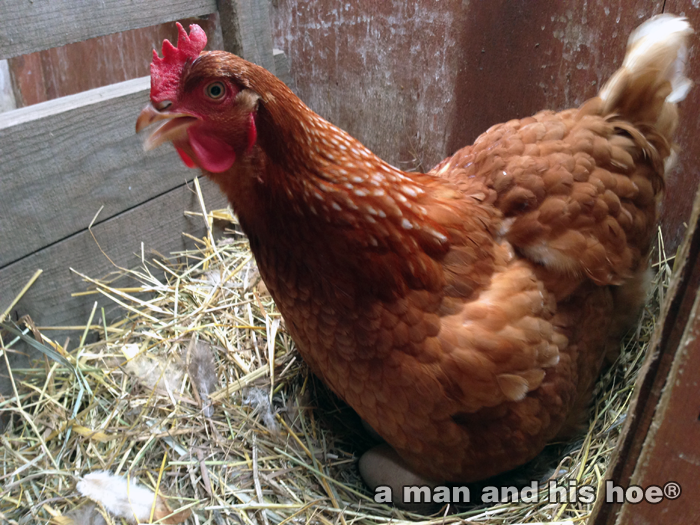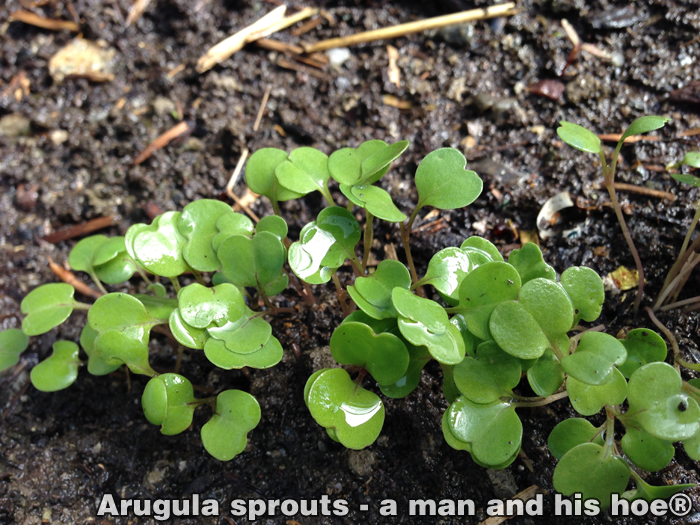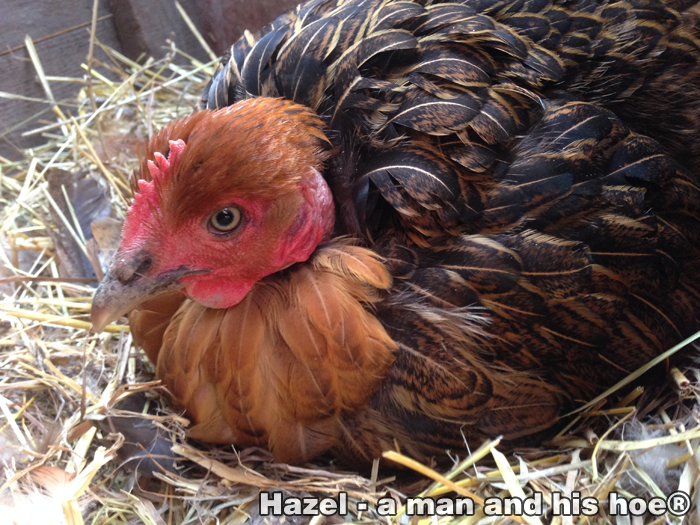Your cart is currently empty!
Month: March 2014
-
Hatching Day


It’s a quiet, drizzly spring day. The brooding hen’s chicks are hatching. This is what a hatched egg looks like. For the first day or two, it is next to impossible to see the chicks. The mother keeps them tucked in underneath her. At times you can hear them peeping, but if you approach, she will tell them to be quiet. This evening, we will move her and her chicks into a protected nursery.


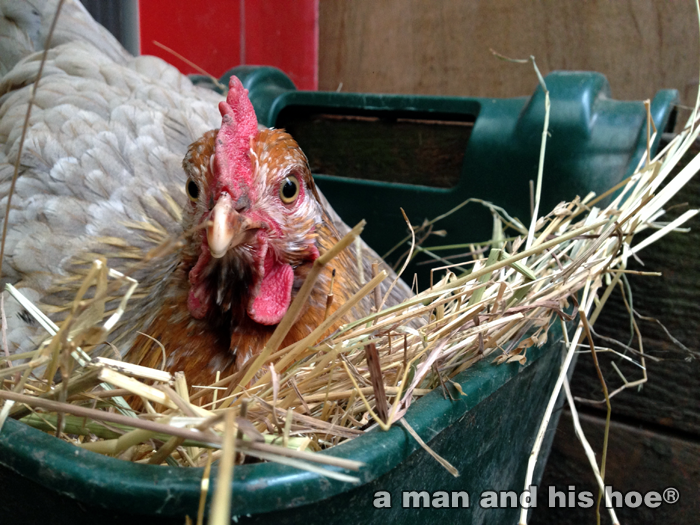
Ina-Svenda is one of my favorite hens. She has a face that is impossible not to love.
-
Chicken Love – It’s Not Nothing

It’s about her last day brooding. I can hear some of her chicks starting to peep. They start peeping before they hatch so I’m not sure if some have already hatched, or if they are about to. So what drives a hen to sit on a clutch of eggs for three weeks? Is it love? Nothing but instinct? What drives a woman to carry a child to term. Is it love? Nothing but instinct?
Is it just the driving force of hormones? Maybe that’s all love is. What’s in it for the hen? Once the chicks hatch, she will spend one, two, up to three months devoted to them. Then they leave her, she leaves them, either way she doesn’t benefit after that. They don’t dote over her after they are raised. They don’t bring her presents on Mother’s Day or take care of her when she gets old. Since she personally doesn’t benefit, you might say that a hen’s love for her chicks is greater than that of a human’s love for her children. After all, most human parents receive many benefits in return for the love they shower on their children. Many of their children provide plenty of love in return, even caring for their parents as they age. A hen can never count on that.
You need vibrant eggs for a hen to incubate them into chicks. When you buy eggs from a man and his hoe®, you know you are getting very vibrant eggs. My eggs are not dead things. They are very much alive. All it takes is three weeks of gentle heat to turn them into healthy chicks. It’s something we tend not to notice when we buy groceries. Almost all of the things we eat are alive. Any fresh salad is a collection of living plants. If you eat eggs, dairy, or meat, all of those things are the products of living things. And it is love that creates all living things. Love (hormones?) is the driving force which makes things grow and reproduce and grow and reproduce and grow a million, billion, trillion, quadrillion, quintillion, sextillion, septillion, octillion, nonillion, decillion, undecillion, duodecillion, tredecillion, quattuordecillion, quindecillion, sexdecillon, septendecillion, octodecillion, novemdecillion, vigintillion, unvigintillion, duovigintillion, infinite times. (how many?)
Today is the warmest day so far of this year. Many of you may laugh to hear that it isn’t even 60ºF (15.5ºC) yet. But it feels like an early spring heat wave for us. The dogs are loving this warm, sunny day.

-
Deepening Spring
Spring is deepening day by day. A few more days and the cherries will be in full bloom. Tomorrow, the temperature may even get up to 60ºF (15.5ºC). The last time it was so warm was back on October 27, 2013, nearly five months ago. Wild swings in temperature are rare here. The change from season to season is very gradual. Spring starts to arrive at the end of February here and doesn’t end until mid-July. Summer then makes a short appearance, but my mid-August, you can already feel Fall moving in.
In some ways, this is a great climate for chickens: never too hot, never too cold. Hazel is the perfect example of a happy chicken. She has an uncanny resemblance to Phyllis Diller. Her wild costume and ear-piercing cackle make Hazel the comedian of the flock.
-
Soufflés Don’t Just Happen
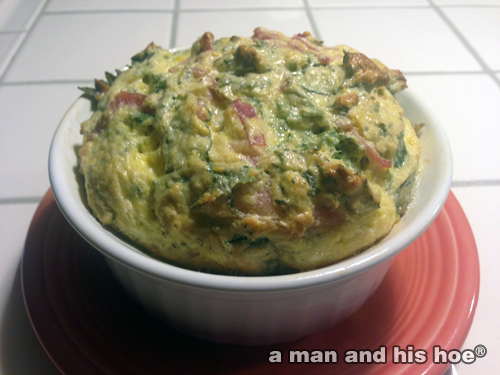
Before you can take a freshly baked soufflé out of the oven you need to pour the soufflé batter into buttered ramekins and put them in the oven.
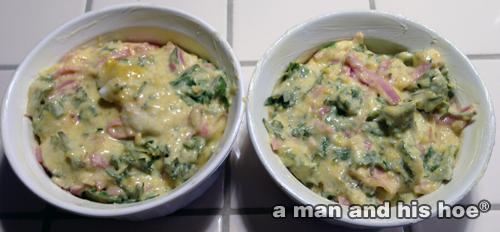
Before you can pour the soufflé batter into buttered ramekins, you need to finish mixing the soufflé batter.

Before you can finish mixing the soufflé batter, you need to add the sliced ham.
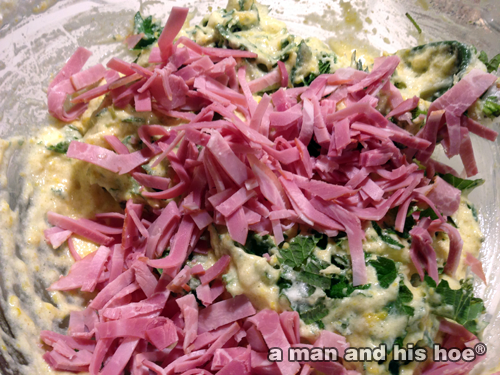
Before you can add the sliced ham to the soufflé batter, you need to finish mixing in the nettle leaves.

Before you can finish mixing in the nettle leaves, you need to add them to the soufflé batter.
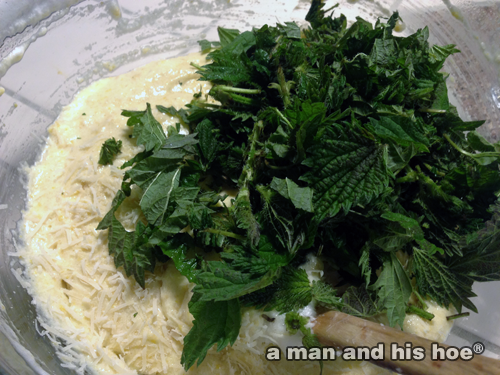
Before you can add the nettle leaves to the soufflé batter, you need to mix in the grated cheese.

Before you mix in the grated cheese, you need to fold in the roux and egg yolk mix into the beaten egg whites
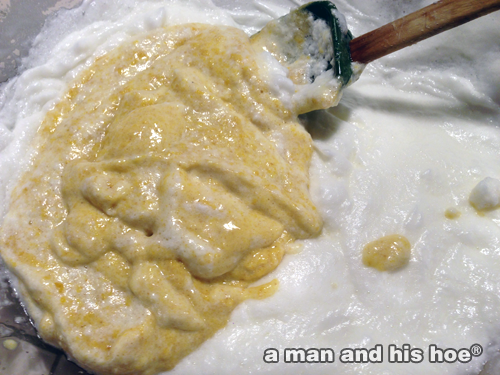
Before you can fold in the roux and egg yolk mix into the beaten egg whites, you need to gently fold in more of the beaten egg whites into the roux.

Before you can fold in more of the beaten egg whites into the roux, you need to add a small portion of the egg whites into the roux and egg yolk mix.

Before you can add a small portion of the egg whites into the roux and egg yolk mix, you need to beat the egg whites into a firm meringue.
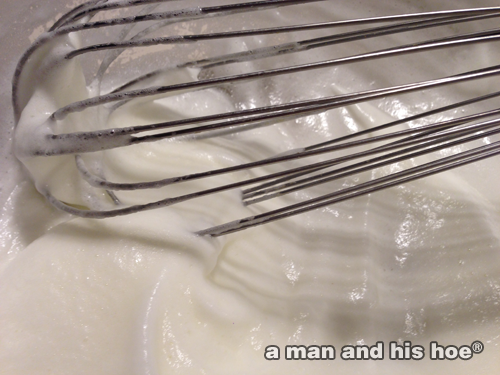
Before you can beat the egg whites into a firm meringue, you need to butter two ramekins.
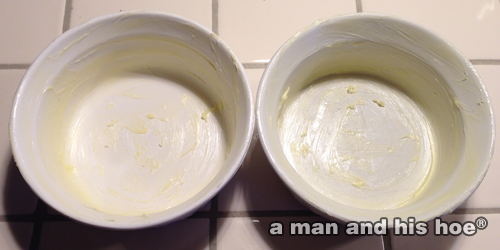
Before you butter two ramekins, it’s a good idea to grate some hard cheese.
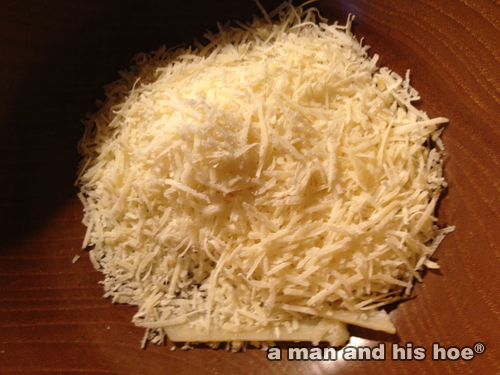
Before you grate some hard cheese, slice some ham.

Before you slice some ham, cut the nettle leaves.
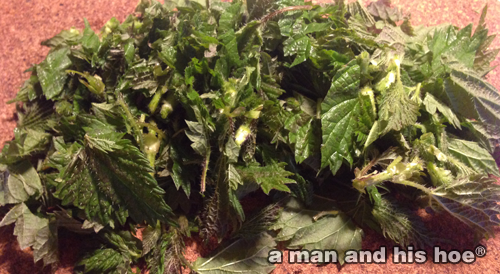
Before you cut the nettle leaves, finish making your rough and egg yolk mix.
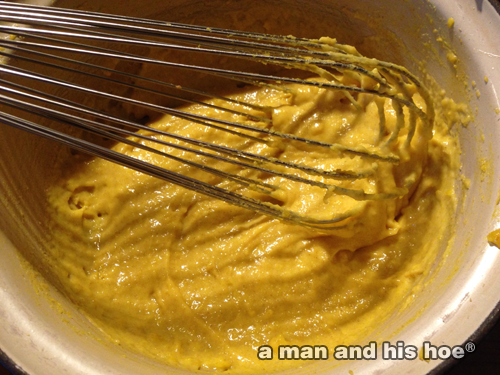
Before you finish making your rough and egg yolk mix, take the rough off the stove and quickly beat in the egg yolks with some milk.

Before you take the rough off the stove and quickly beat in the egg yolks with some milk, cook the rough until it gathers into a soft ball.
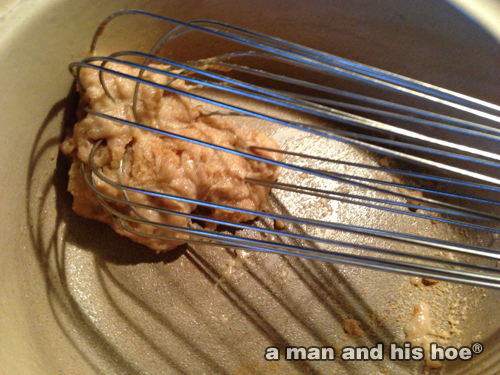
Before you cook the rough until it gathers into a soft ball, brown the flour and butter together.
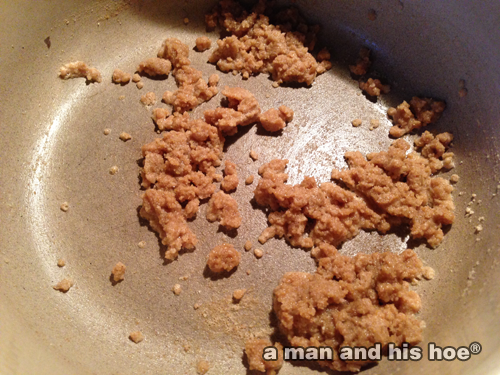
Before you brown the flour and butter together, melt some butter in a pan and add some flour.

Before you melt some butter in a pan and add some flour, wash the freshly picked nettles.

Before you wash the freshly picked nettles, you’ll need to go out into your garden and pick them. You don’t have nettles in your garden? That’s OK, you can use any fresh greens that you find in your garden. Oh, you don’t have a garden? You can’t just go outside and gather something fresh to eat? I guess you could run down to your local green grocer and ask if they have any produce that was picked with the last few hours. What? Your grocer doesn’t even have anything picked today? How is that possible? Surely there is a farm within a 30 to 60 minute drive from your green grocer. There’s no excuse not to have fresh produce picked at least that morning. Well, just do your best, and if your green grocer doesn’t have produce picked that day on their shelves, it’s time to find a new green grocer or find a nearby farmer who will see that you have produce picked that day.

Before you wash you go pick your fresh nettles or greens, break your eggs and separate the egg whites from the yolks.
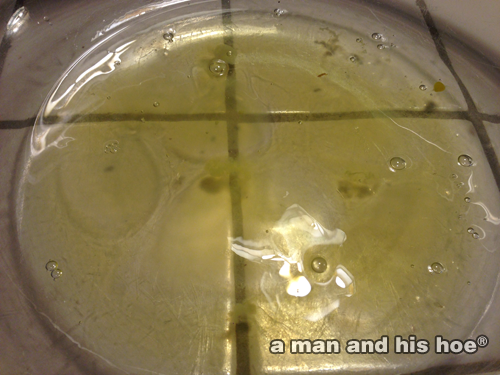

Before you break and separate your eggs, select five eggs laid today. Five eggs will make two individual soufflés. If you have more people, figure between two and three eggs per person. Eggs work best at room temperature, so if your eggs are in the refrigerator, take them out and let them rest until they are at room temperature.
You don’t have eggs laid today? When were the eggs you have laid? What? You don’t know? Don’t tell me you purchased eggs which you didn’t know how old they were? Didn’t the farmer who sold you your eggs tell you when they were laid? Oh, you forgot to ask? Or did you say you bought your eggs from a supermarket? You can’t see a label on the carton saying how old they are? I wonder why that is? What are they trying to hide? Maybe it’s time to raise your egg standards. The next time you purchase eggs, ask the seller you’d like eggs laid that day. If they look at you like you’re nuts, take a deep breath. You’re not the crazy one. The seller who thinks it doesn’t matter how old eggs are to make a good soufflé is the crazy one.

Life is too short for ho-hum eggs. Find someone who will sell you fresh eggs from chickens that spend all day outdoors enjoying the fresh air, sunshine, and exercise. -
Anatomy of a Branch
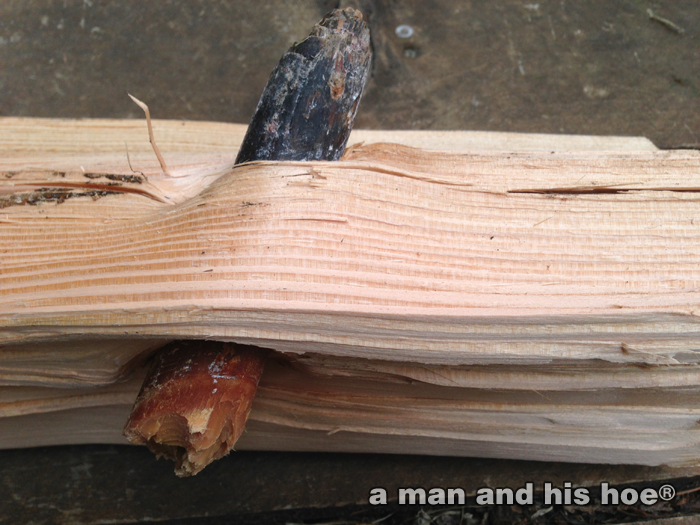
So that’s what a branch looks like inside the trunk of a tree. It penetrates deep into the center of the trunk.
Rachel does not want to be disturbed when she is on her nest. Svenda just takes it all in stride.
